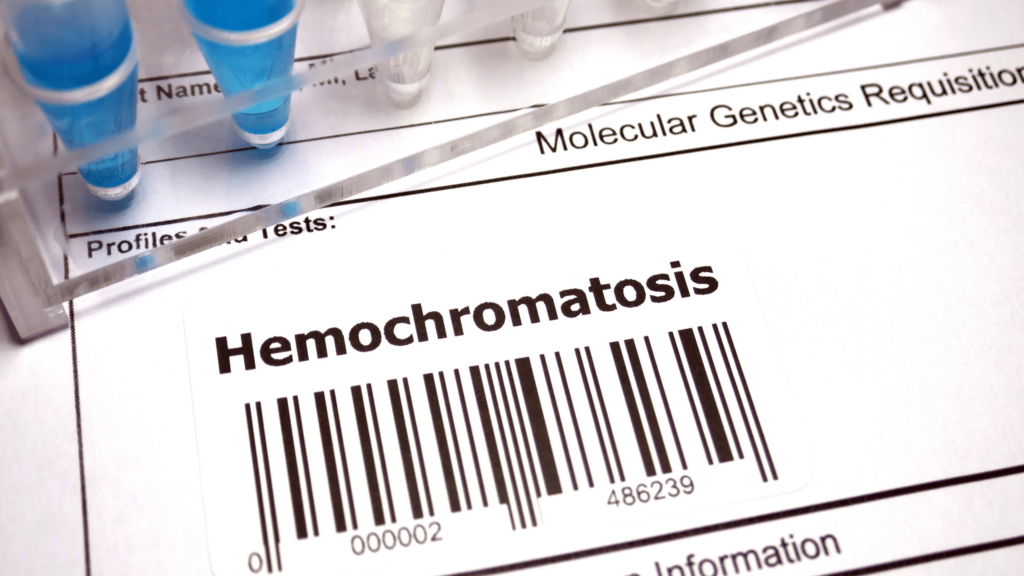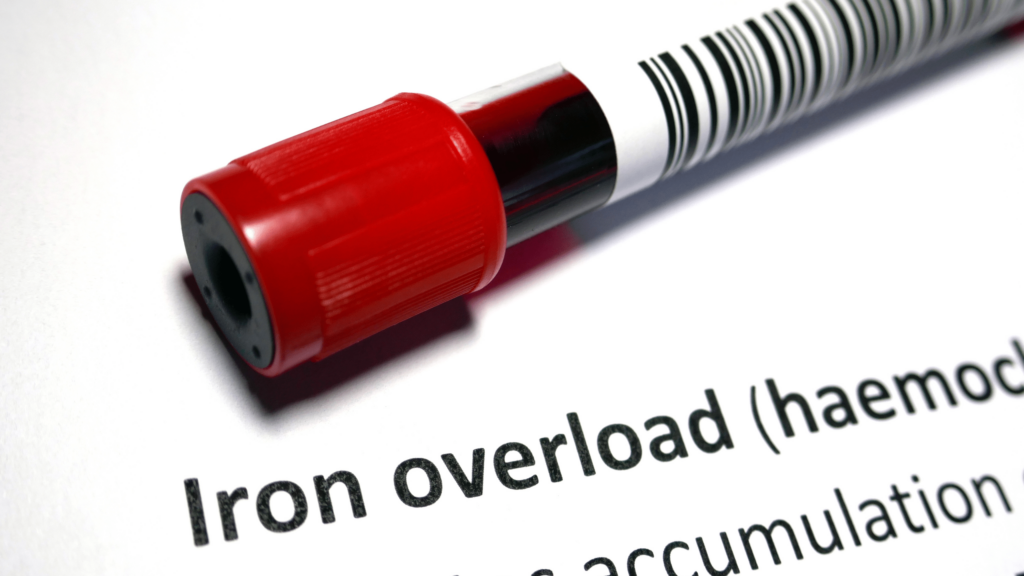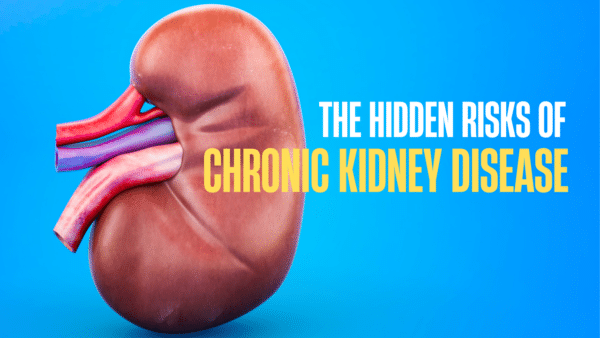Hemochromatosis is a condition that is characterized by excessive iron accumulation in the body and is not typically associated with hair loss as its primary symptom. However, recent research suggests a potential link between this disorder and thinning hair. While liver problems and other systemic issues are more commonly recognized symptoms, examining all possible effects of hemochromatosis, including its impact on hair health, is crucial. This comprehensive exploration will delve into the intricacies of hemochromatosis, its potential relationship with hair loss, and the broader implications for overall health.

Understanding Hemochromatosis and Its Health Implications
Hemochromatosis is a metabolic disorder that leads to excessive absorption and iron storage in the body. This overload can lead to various health complications, including joint pain, liver damage, and diabetes mellitus. Individuals of Northern European descent are at a higher risk of developing this condition, though it can affect people from all ethnic backgrounds.
The disorder occurs when too much iron accumulates in the body, affecting organs not designed to store large quantities of this mineral. Elevated serum iron levels can result in liver dysfunction, potentially progressing to cirrhosis or liver cancer. The excess iron doesn’t just affect the liver; it can also impact the heart, pancreas, and other vital organs, leading to a cascade of health issues if left untreated.
Types of Hemochromatosis
There are several types of hemochromatosis, each with its own characteristics:
- Primary (Hereditary) Hemochromatosis: This is the most common form caused by genetic mutations. It’s typically inherited in an autosomal recessive pattern, meaning both parents must pass on a mutated gene for the child to develop the condition.
- Secondary Hemochromatosis: Also known as iron overload syndrome, this type results from other medical conditions or treatments that cause excess iron accumulation, such as frequent blood transfusions or certain types of anemia.
- Juvenile Hemochromatosis: A rare form that appears in childhood or adolescence, causing more rapid iron buildup and potentially more severe complications at an earlier age.
- Neonatal Hemochromatosis: An extremely rare condition affecting newborns, often leading to liver failure shortly after birth.

Symptoms and Warning Signs
The symptoms of hemochromatosis can be subtle and easily overlooked, especially in the early stages. While hair loss is not a primary indicator, it may occur alongside other symptoms. Common signs include:
- Fatigue and weakness
- Joint pain, particularly in the knuckles of the first and second fingers
- Abdominal pain
- Unexplained weight loss
- Skin discoloration, appearing bronze or grey
- Erectile dysfunction or loss of libido for men
- Irregular menstrual cycles in women
- Heart problems, such as irregular heartbeat
- Diabetes
Recognizing these warning signs early can lead to timely intervention and better health outcomes. It’s important to note that symptoms can vary widely between individuals and may not appear until significant iron accumulation has occurred.

Exploring the Link Between Hemochromatosis and Hair Loss
Although not widely recognized, hair loss can be a secondary effect of hemochromatosis. The relationship between iron overload and hair health is complex, involving various physiological factors. While excessive iron can potentially contribute to hair thinning, it’s essential to consider other possible causes before attributing hair loss solely to hemochromatosis.
Iron’s Role in Hair Health
Iron plays a crucial role in several bodily functions, including hair growth. Iron helps red blood cells carry oxygen to your hair follicles, which is essential for healthy hair growth. However, the relationship between iron and hair health is not straightforward:
- Iron Deficiency: Well-known to cause hair loss, as the body prioritizes iron for essential functions over hair growth.
- Iron Overload: Less understood but potentially damaging to hair follicles through oxidative stress and inflammation.
In hemochromatosis, the excess iron may interfere with normal hair growth cycles, potentially leading to thinning or loss. Additionally, the systemic effects of iron overload on other organs can indirectly impact hair health.
Potential Mechanisms of Hair Loss in Hemochromatosis
Several theories exist on how hemochromatosis might contribute to hair loss:
- Oxidative Stress: Excess iron can generate free radicals, causing damage to hair follicles and disrupting normal growth cycles.
- Hormonal Imbalances: Iron overload can affect the endocrine system, potentially altering hormone levels that influence hair growth.
- Nutrient Deficiencies: Despite iron excess, hemochromatosis can lead to deficiencies in other nutrients crucial for hair health, as the body’s ability to absorb and utilize these nutrients may be impaired.
- Chronic Inflammation: The body’s response to iron overload can create a state of chronic inflammation, which may negatively impact hair follicles.
Diagnosing Hemochromatosis
Accurate diagnosis of hemochromatosis involves a comprehensive approach:
- Medical History and Physical Examination: Physicians begin by reviewing family history, as hereditary hemochromatosis often runs in families. A thorough physical assessment helps identify potential signs of iron overload, such as skin discoloration or liver enlargement. During this process, doctors may inquire about hair loss or other seemingly unrelated symptoms to build a complete clinical picture.
- Blood Tests: Essential diagnostic tools include measuring ferritin and transferrin saturation levels. Ferritin is a protein that stores iron in the body, and elevated levels can indicate iron overload. Transferrin saturation measures the amount of iron bound to transferrin, a protein that transports iron in the blood. High levels of both ferritin and transferrin saturation strongly suggest hemochromatosis.
Other blood tests may include:
- Serum iron levels
- Total iron-binding capacity (TIBC)
- Complete blood count (CBC)
- Liver function tests
- Genetic Testing: For suspected hereditary hemochromatosis, a genetic test can identify possible mutations in the HFE gene, which is responsible for most of the cases. The two most common mutations are C282Y and H63D.
- Additional Tests: In some cases, further testing may be necessary to assess organ iron accumulation and potential damage:
- Liver Biopsy: This invasive procedure includes removing a small sample of liver tissue to examine for iron content and signs of damage or cirrhosis.
- MRI Scans: Non-invasive magnetic resonance imaging can detect and quantify iron accumulation in the liver and other organs.
- Electrocardiogram (ECG) or Echocardiogram: These tests may be performed to assess heart function if cardiac involvement is suspected.

Treatment Options for Hemochromatosis and Associated Hair Loss
Managing hemochromatosis primarily focuses on reducing iron levels in the body and preventing complications. Two main treatment approaches are:
- Phlebotomy (Therapeutic Venesection): This is the primary treatment for hemochromatosis, involving regular blood removal to decrease iron levels. The process is similar to donating blood:
- Initial Phase: Frequent blood draws (usually weekly) to rapidly reduce iron levels.
- Maintenance Phase: Less frequent blood draws (typically every 2-4 months) to maintain normal iron levels.
The frequency and duration of phlebotomy treatments are determined by regular monitoring of ferritin levels.
- Chelation Therapy: For patients who cannot undergo phlebotomy (e.g., due to anemia or poor venous access), chelation therapy is an alternative:
- Medication (such as deferasirox or deferoxamine) is administered orally or by injection.
- These drugs bind to excess iron, allowing its excretion from the body through urine or feces.
Chelation therapy is generally less effective than phlebotomy and may have more side effects, so it’s typically reserved for specific cases.
Addressing Hair Loss in Hemochromatosis
For hair loss associated with hemochromatosis, addressing the underlying iron overload may help improve hair health. Additional treatments targeting hair growth might be considered:
- Topical Treatments: Minoxidil or other hair growth stimulants may be recommended.
- Nutritional Supplements: Ensuring adequate levels of other nutrients important for hair health (e.g., biotin, zinc, vitamin D) may be beneficial.
- Scalp Treatments: Therapies to improve scalp health and circulation may support hair growth.
- Hair Transplantation: In severe cases, surgical hair restoration might be an option after iron levels are stabilized.
For a comprehensive approach, it’s crucial to consult a hematologist for hemochromatosis management and a dermatologist specializing in hair disorders.
It’s crucial to consult with both a hematologist for hemochromatosis management and a dermatologist specializing in hair disorders for a comprehensive approach.
Prevention and Management Strategies
Effective management of hemochromatosis involves lifestyle modifications and ongoing monitoring:
- Dietary Adjustments:
- Limiting iron-rich foods, especially heme iron found in red meat and organ meats.
- Increasing consumption of foods that inhibit iron absorption, such as calcium-rich dairy products, whole grains, and foods high in polyphenols.
- Avoiding vitamin C supplements with meals, as vitamin C enhances iron absorption.
- Limiting alcohol consumption, as it can increase iron absorption and cause additional liver damage.
- Regular Check-ups:
- Monitoring iron levels through blood tests to guide treatment decisions.
- Annual liver function tests and periodic imaging to assess organ health.
- Stress Management:
- Reducing stress through techniques like meditation, yoga, or counseling.
- Regular physical activity, which can help manage stress and promote overall health.
- Avoiding Iron Supplements: Unless specifically recommended by a healthcare provider, individuals with hemochromatosis should avoid iron supplements and multivitamins containing iron.
- Blood Donation: For individuals in the maintenance phase, regular blood donation can serve as a form of treatment while also helping others.
Living with Hemochromatosis
Long-term management of hemochromatosis requires a proactive approach:
- Continuous Monitoring:
- Regular blood tests to track iron levels and adjust treatment as needed.
- Periodic screenings for complications associated with hemochromatosis, such as liver disease, heart problems, and diabetes.
- Symptom Awareness:
- Staying attuned to changes in health, including potential hair loss or other unusual symptoms.
- Keeping a symptom diary to discuss with healthcare providers during check-ups.
- Support and Resources:
- Engaging with support groups to connect with others living with hemochromatosis.
- Accessing educational resources from reputable organizations like the Iron Disorders Institute or the American Hemochromatosis Society.
- Considering genetic counseling, especially for family planning purposes.
- Collaborative Care:
- Working with a multidisciplinary team of healthcare providers, including hematologists, gastroenterologists, and potentially dermatologists or endocrinologists.
- Ensuring all healthcare providers are aware of the hemochromatosis diagnosis to avoid contraindicated treatments or medications.
- Lifestyle Adaptations:
- Making necessary adjustments to diet, exercise routines, and daily habits to support overall health and manage hemochromatosis effectively.
- Exploring non-toxic cookware options, such as iron cookware, can potentially increase dietary iron intake.
- Planning for the Future:
- Understanding the long-term outlook and potential complications of hemochromatosis.
- Discussing advanced care planning with healthcare providers and loved ones.

Conclusion
While hemochromatosis is not primarily associated with hair loss, it can potentially contribute to this issue through various mechanisms. Understanding the complex relationship between iron overload and hair health is crucial for comprehensive management of the condition. By addressing hemochromatosis through proper diagnosis, treatment, and lifestyle modifications, individuals can potentially mitigate its effects on overall health, including hair vitality.
It’s important to remember that hemochromatosis, when diagnosed early and managed effectively, often has a good prognosis. Many individuals with the condition lead normal, healthy lives with appropriate treatment and monitoring. For those experiencing hair loss in conjunction with hemochromatosis, a multifaceted approach addressing both the underlying iron overload and specific hair health concerns offers the best chance for improvement.
As research in this field continues to evolve, our understanding of the relationship between hemochromatosis and hair health may deepen, potentially leading to more targeted treatments and management strategies. In the meantime, individuals with hemochromatosis should work closely with their healthcare team to develop a personal comprehensive care plan that addresses all aspects of their health, including any concerns about hair loss or other symptoms.
By staying informed, proactive, and engaged in their care, individuals with hemochromatosis can effectively manage their condition and maintain a high quality of life.The journey with hemochromatosis may present challenges, but with proper support, resources, and medical care, these challenges can be successfully navigated, allowing individuals to focus on overall health and well-being.

